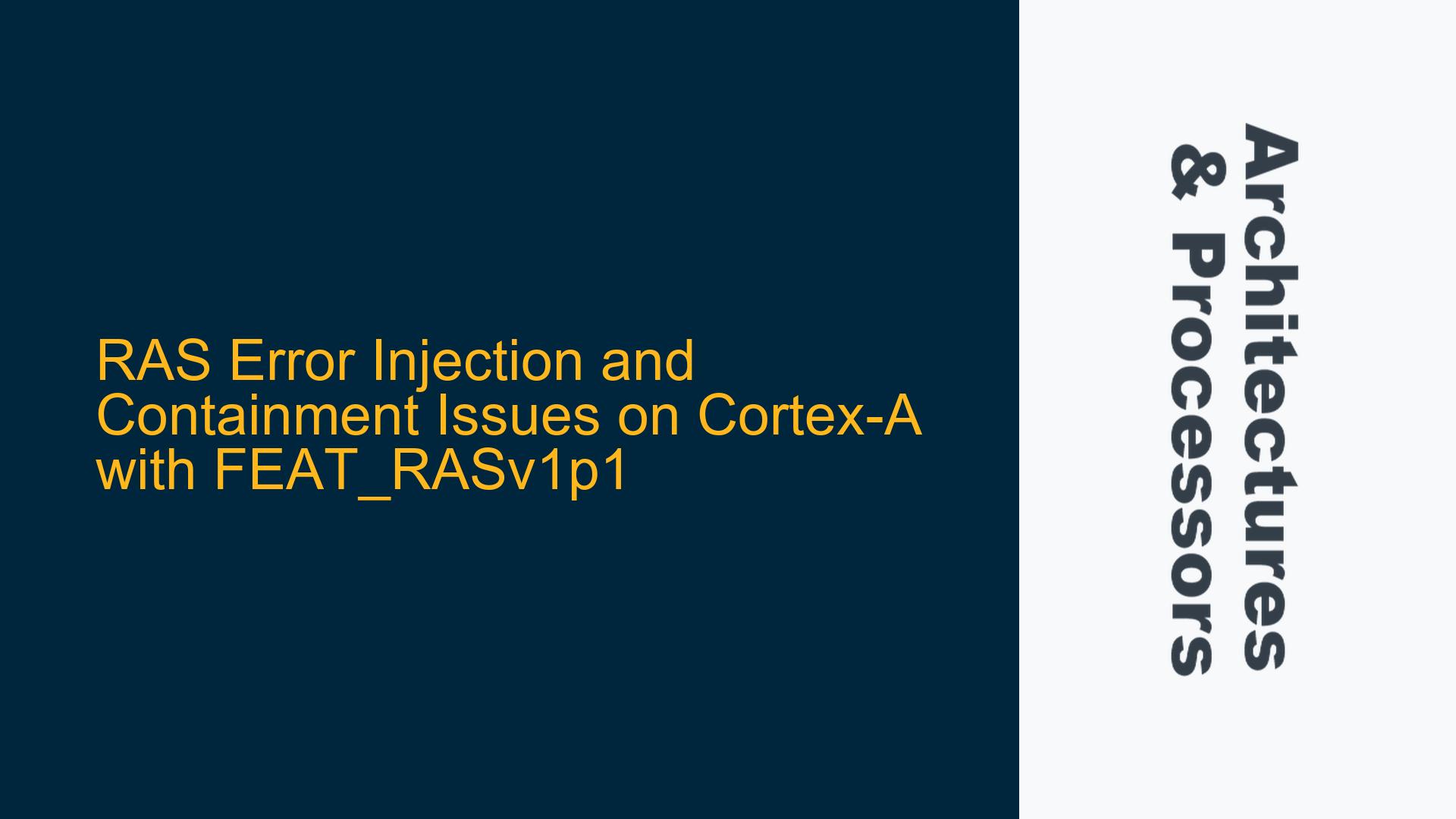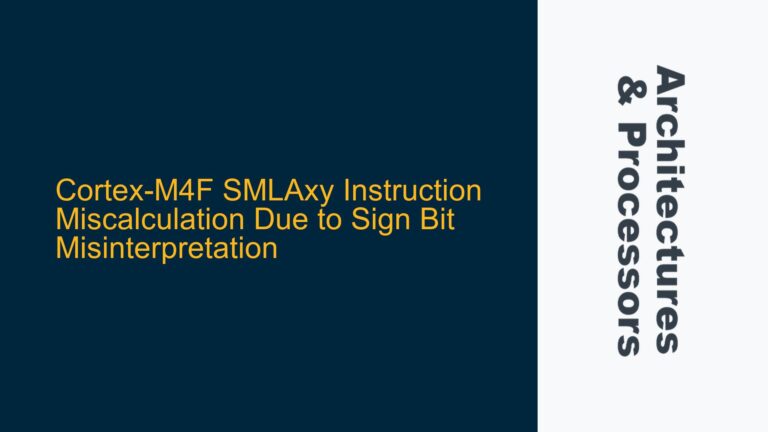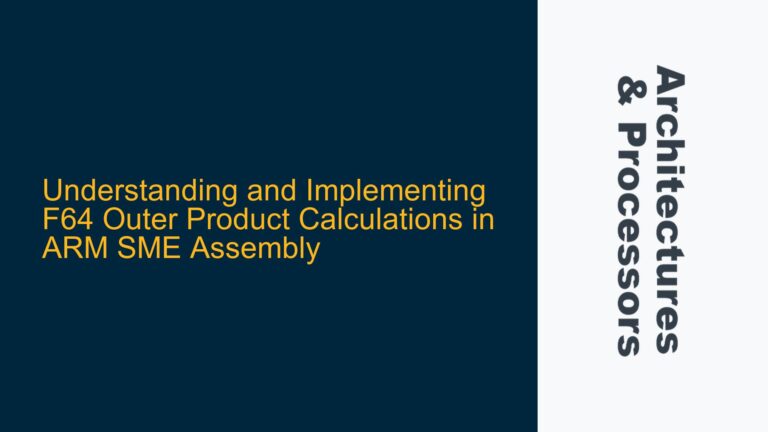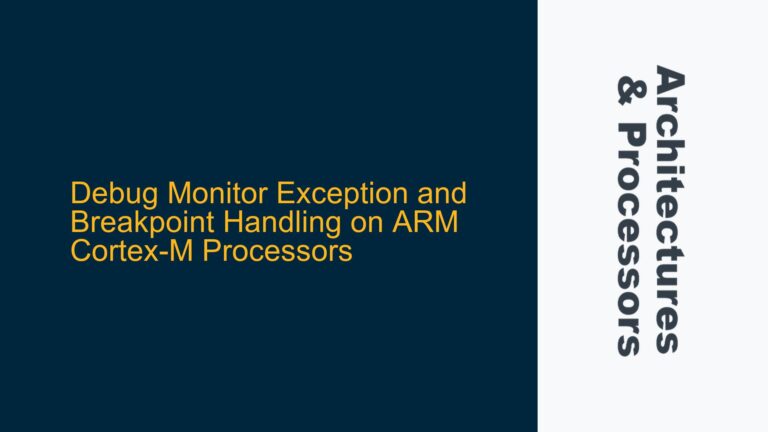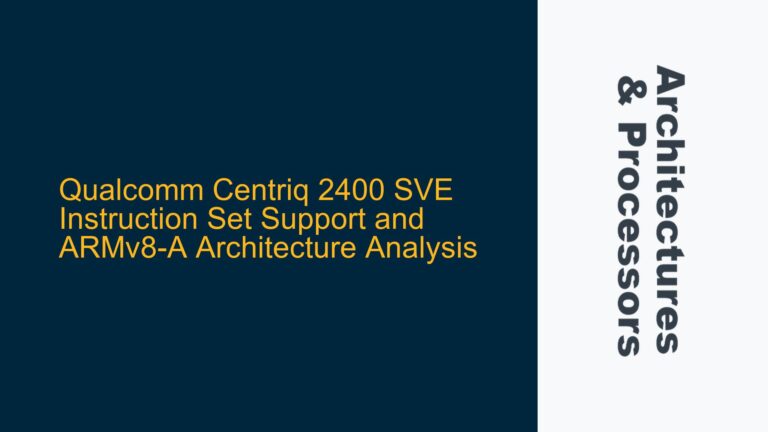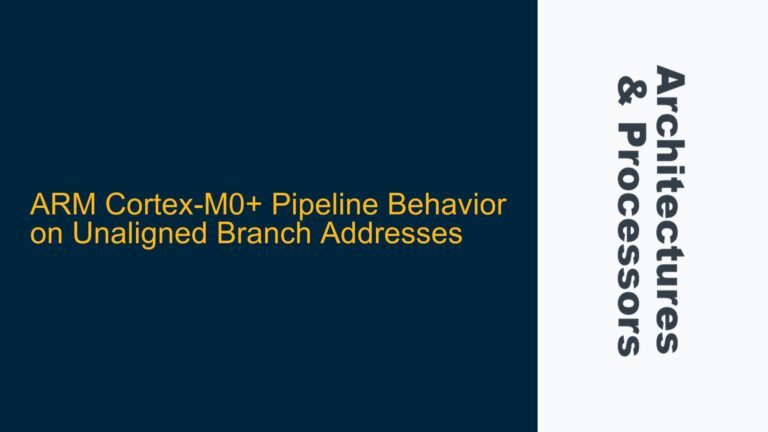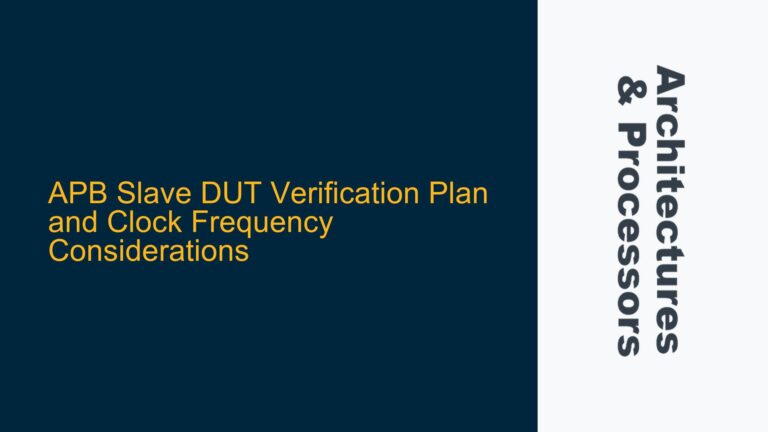ARM Cortex-A RAS Error Injection: SError Exception Not Triggering for CE/DE Errors
The ARM Cortex-A architecture, particularly when utilizing the FEAT_RASv1p1 (Reliability, Availability, and Serviceability) extension, provides mechanisms for error injection and containment. However, a common issue arises when attempting to inject Corrected Errors (CE) and Deferred Errors (DE) using the Pseudo-fault Generation Control Register (ERR0PFGCTL). While Uncorrected Errors (UE) successfully trigger an SError exception at EL2, CE and DE errors do not, despite being recorded in the ERR0STATUS.CE/DE registers. This discrepancy can hinder testing and validation of error handling mechanisms, particularly when attempting to defer errors using the ESB (Error Synchronization Barrier) instruction and reading the deferred error state via DISR_EL1.
The core of the problem lies in the behavior of the Cortex-A implementation regarding error synchronization and containment. Specifically, the SError exception is not triggered for CE and DE errors, even though these errors are logged in the status registers. This behavior is implementation-specific and depends on how the processor handles error states and synchronization events. The goal is to inject a containable error that can be deferred at EL2 entry using the ESB instruction, allowing the deferred error to be read from DISR_EL1. However, when injecting a DE error and using ESB, DISR_EL1 reads zero, indicating that the error is not being deferred as expected.
Memory Barrier Omission and Cache Invalidation Timing
The failure to trigger an SError exception for CE and DE errors can be attributed to several factors related to memory barriers, cache invalidation timing, and the specific implementation of the Cortex-A processor. Corrected Errors (CE) are inherently non-fatal and do not generate an error response or exception at the Processing Element (PE). Instead, they are logged in the status registers and may generate an interrupt if configured in the ERR
Deferred Errors (DE) present a more complex scenario. Whether a DE generates an SError exception depends on the implementation of the Cortex-A processor. In some cases, an uncorrectable error might be deferred to the requester (the PE), causing the PE to generate an error exception when it receives the deferred error. However, other implementations might not support generating this kind of response as a completer, only deferring an error on a write to a different component. This variability in implementation leads to the observed behavior where DE errors are recorded in the status registers but do not trigger an SError exception.
The timing of cache invalidation and memory barriers also plays a critical role in error containment and synchronization. The ESB instruction is designed to synchronize errors and defer them to DISR_EL1. However, if the cache invalidation or memory barrier operations are not correctly timed, the error state may not be properly synchronized, leading to DISR_EL1 reading zero. This issue is compounded by the fact that the criteria for error synchronization are implementation-specific, meaning that the behavior of the ESB instruction can vary between different Cortex-A implementations.
Implementing Data Synchronization Barriers and Cache Management
To address the issue of SError exceptions not triggering for CE and DE errors, a comprehensive approach involving data synchronization barriers and cache management is required. The first step is to ensure that the ERR0PFGCTL register is correctly configured to inject the desired error type. For CE errors, it is important to recognize that these errors will not generate an SError exception, and instead, focus should be on testing the error interrupt handling and fault logging mechanisms.
For DE errors, the key is to ensure that the error is properly synchronized and deferred to DISR_EL1. This involves using the ESB instruction to synchronize the error state and checking the DISR_EL1 register for the deferred error. If DISR_EL1 reads zero, it indicates that the error was not properly synchronized, and further investigation into the cache management and memory barrier implementation is necessary.
One potential solution is to explicitly invalidate the cache and ensure that memory barriers are correctly placed before and after the ESB instruction. This ensures that the error state is properly synchronized and deferred to DISR_EL1. Additionally, it may be necessary to consult the specific implementation details of the Cortex-A processor being used, as the behavior of the ESB instruction and error synchronization can vary between implementations.
In cases where the error is not being deferred as expected, it may be necessary to inject an uncorrectable error (UE) instead. Uncorrectable errors are more likely to generate an SError exception and can be used to test the error containment and handling mechanisms. However, this approach should be complemented with thorough testing of the CE and DE error handling mechanisms to ensure comprehensive error coverage.
Finally, it is important to recognize that the behavior of the Cortex-A processor regarding error injection and containment is implementation-specific. This means that the results of error injection tests may vary between different Cortex-A implementations, and it is essential to consult the specific documentation and errata for the processor being used. By carefully configuring the error injection registers, ensuring proper cache management and memory barrier placement, and understanding the implementation-specific behavior of the Cortex-A processor, it is possible to effectively test and validate the error handling mechanisms in ARM Cortex-A systems.
In conclusion, the issue of SError exceptions not triggering for CE and DE errors in ARM Cortex-A processors using FEAT_RASv1p1 is a complex problem that requires a deep understanding of the processor’s error handling mechanisms, cache management, and memory barrier implementation. By following the outlined troubleshooting steps and solutions, it is possible to effectively test and validate the error handling mechanisms, ensuring reliable and robust system performance.
